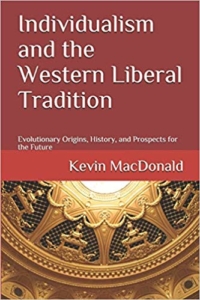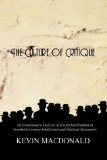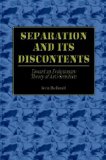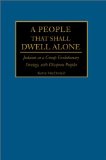Tucker Interviews VDARE’s Lydia Brimelow
In what I hope is a breakthrough for our side, Tucker Carlson interviewed VDARE’s Lydia Brimelow on the very expensive lawfare (~$500,000) initiated by left-activist Letitia James, New York Attorney General. James is attempting to destroy VDARE not only with the lawsuit, but also with such tactics as demanding the real names of their writers, many of whom use pen names to shield themselves from the the fallout they would endure—fallout that all too often has resulted in loss of job (some work in government) and other penalties. Another important topic here is the disgusting harassment that she and her family have gotten from the SPLC since buying their castle-meeting venue in Berkeley Springs, West Virginia.
The reason I think this may well be a breakthrough is that Tucker Carlson has huge reach. A ~nine-minute clip of the video of the interview has been watched 19.8M times on X as I write this; it was re-Xed 32K times, and got 78K likes. Further Elon Musk then commented it was “alarming” in a post that was viewed by 16M times, received 119K likes and was re-Xed 32K times.
Alarming https://t.co/QMyP7A0oxm
— Elon Musk (@elonmusk) February 20, 2024
And:
I hope the public is waking up to this https://t.co/xDw7UYKpS0
— Elon Musk (@elonmusk) February 21, 2024
This is reach that immigration patriots and the dissident right in general have been denied as long as I can remember. In fact, the entire media, including social media, has been set up to exclude voices like VDARE. We have been de-platformed, banned from from social media or had our reach and followers restricted, and we have been refused service from financial companies. Indeed, as Lydia notes, it’s at the point where it’s quite difficult for VDARE to obtain legal representation. And we all know how corrupt the courts are. Just ask Donald Trump, another of James’s victims.
Here’s one terrifying example:
[Lydia]: When you have the media so focused on turning you into a monster, on conveying to people that you are a subhuman who has evil, evil, you know, [with] patriotic ideas, there are a lot of people on the left, a lot of people generally probably, who are just there on the edge. And when they hear somebody being described as this person, they will believe them and they are unhinged. So one of the other challenges that we have faced is, there’s actually a group of trannies who have decided to stalk my family, and by that I mean follow us around, town, at the farmers market that we attend [and] again at my church, showing up at my church, wearing lots of guns on the outside of their clothes, in an attempt to intimidate us. … It’s terrifying. And the main leader is male to female, but one of his sidekicks is male to goblin identifying. Do goblins even have a gender? I mean, these people actually are telling you that they are demons. You have to believe them.
Imagine being stalked like that. Absolute evil. And of course, I have been a victim of their evil too in a campaign led by the disgusting Heidi Beirich (joined by the ADL) at my university starting in 2006 and resulting in a very difficult eight years, until I finally retired. Happiness is seeing Long Beach in the rear view mirror.
Beirich has apparently been replaced by the equally disgusting Michael Hayden. Like Hayden, Beirich tried to stir up the faculty against me, but with a much more receptive target at the university. (At least, Beirich’s actions did not result in stalking me or my family.) She was quite successful in stirring up the university. Pretty much the entire faculty turned against me, with public statements from various departments (e.g., see here, under the heading “My Replies to the “My replies to the History Department statement of April 4, 2008). One of my VDARE articles described what happened: “Heidi Does Long Beach: The SPLC vs. Academic Freedom,” dated November 14, 2006.
. And I was inundated with hostile emails for quite a long time after, many proudly posted on the faculty listserv.
One of the good things about the Brimelows’ situation is that they reside in a small town in a red state that, apart from a few nutcases, is apparently on their side. It’s a town where character and behavior count more than the mendacious propaganda used against them—unlike your typical American university.
Tucker asks if Lydia has any information on who funds the SPLC. It will come as no surprise to readers of TOO that the money comes from Jews, noted by Jerry Kammer (“The SPLC Depends on Jewish Donors“):
Because the Jewish donor base is so critical, the SPLC appeals to “hate” rather than trying to make life better for poor people:
Ripping the SPLC as “puffed up crusaders,” [JoAnn Wypijewski wrote in The Nation]: “Hate sells; poor people don’t, which is why readers who go to the SPLC’s website will find only a handful of cases on such non-lucrative causes as fair housing, worker safety, or healthcare, many of those from the 1970s and 1980s. Why the organization continues to keep ‘Poverty’ (or even ‘Law’) in its name can be ascribed only to nostalgia or a cynical understanding of the marketing possibilities in class guilt.”
Jews fund the left in America, and that certainly includes the SPLC. Jews who contribute to leftist causes do so for typically Jewish motives — fear and loathing of the White majority, not compassion for poor people. The rhetoric of helping poor people may be used if it aids in the larger anti-White agenda but is completely ignored when, as in the case of immigration policy, it does not. What’s good for the Jews and all that.
I am personally very proud to be associated with VDARE, with 29 articles posted there, dating from 2003. Their list of writers includes many who have written for TOO, and topics include race realism, Jewish influence, and of course our disastrous immigration policy.
The video is at TuckerCarlson.com behind a paywall. This is the machine-produced transcript, lightly edited for readability.
TIMESTAMP HEADLINE
00:04:58
Targeted by Letitia James
00:19:49
Stalked by the SPLC
Tucker Illegal immigration into the United States is at its highest levels ever. Tens of millions of people have come here illegally over the past 15 years, and none of them will ever leave. Mostly they come from the poorest countries on the planet. We don’t know anything about them, really. We don’t know if they’re pro America. We don’t know if they’re hostile to the people who already live here. We don’t know, in the case of the recent arrivals, what they’re going to do for a living as robotics eliminate low skilled jobs. So what’s happening right now at the border that what’s often mentioned on TV is really undersold as a story. This is changing America forever, and almost certainly for the worse as we’re watching it. And no one is doing anything about it. The governor of Texas occasionally makes noises about it – it’s over his border that this human wave is flowing, and yet he’s taken no real steps to stop it. There are some media outlets that let you know that it’s happening in general terms, but they don’t seem particularly outraged by it. We’re sitting here as our country is destroyed and no one’s responding, and at some point you have to ask why? Are the majority of Americans in favor of this? Of course not. In fact, no one’s in favor of this. No one will defend this in public. No one will explain why we need it. Why it’s a good idea. How it’s going to help this country. How your grandchildren will live in a better place because of it. People are just silent, like it’s not even happening. And again, you have to ask why. And the answer, of course, is really simple because they’re afraid they know they’ll be punished if they say anything about it.
The story of Peter and Lydia Brimelow explains why they’re afraid. Peter Brimelow has been a journalist for 50 years. Worked at a whole bunch of what are now called mainstream publications. Was an editor – Barron’s, Forbes, National Review, Dow Jones, a legitimate old school journalist. And in the late 90s, he began to ask questions about our immigration scheme. Is this really good idea, is it helping America? And of course, no one could answer those questions because the answer is obvious. No, it’s destroying America as it destroyed California, so it will destroy your state. That’s certain. But for asking that question, he was fired from his jobs and shunted off into what we call the fringes. But he didn’t stop. He started a website called VDARE. He runs it now with his wife, Lydia. And for the crime in the supposedly free country of opposing the immigration system currently in place — not the official system, but the actual system — where anyone from the poorest parts of America [I think he meant ‘the world’] with no skills whatsoever can come here and immediately go on welfare. That’s our current system. For saying that that’s a bad idea, powerful forces have just tried, to destroy their lives, not just their lives, the lives of their family using the justice system to do it. And needless to say, you probably guessed, using something called the Southern Poverty Law Center, which is nothing to the South or poverty. It has to do with shutting down free speech in this country. They have descended on the Brimelows and have really kind of tried to destroy them. That’s not an overstatement, but you judge for yourself because Lydia Brimelow, who helps run VDARE, joins us now to explain what’s happened to her. Lydia, thanks so much for coming on.
Lydia Brimelow Thank you so much, Tucker. It’ll be very nice to have our story told.
Tucker So I have known your husband, sort of, since he was not a controversial figure at all. And he became a controversial figure when he began to say things like, hey, why are we doing this? And he was immediately called a White nationalist, a White supremacist. And I remember very well his response, which is, no, I’m not. And if I was, I’d say so. But that kept up and he wound up publishing with you, VDARE online. That would seem not a particularly controversial thing to do in a free country. But for your family, it’s been, a very risky thing to do. So I hope that you would explain to us what the government, we’ll start with the government, is trying to do to you for daring to oppose the immigration system.
Lydia Brimelow Yeah, absolutely. So it’s it’s hard to believe everybody who hears the story says it’s completely incredible. Peter founded VDARE Foundation, which has its main project of VDARE.com back in the late 90s. As you said, we’re in our 25th year now, and I joined about ten years ago. I do the fundraising and the back office work, and he handles everything that goes up on the website VDARE.com. We’re a nonprofit journalism enterprise. So everything that we do, all of our people are paid through generous donations from individuals. I can tell you we don’t get any government grants or big foundation grants either. It’s all just grassroots. And we’re veterans of cancel culture at this point. So we’ve been kicked off a lot of mainstream services that most people use to distribute the media that they produce. And that is nothing compared to what we’re facing right now, which started about two years ago, originating out of the hate crimes division in the state of New York. A series of subpoenas were issued by Letitia James first, to Facebook, which I can explain a little bit in a minute. And then to us and our board members, at VDARE Foundation, with no clear trigger, they have refused to tell us what they’re investigating. It’s been two years of us just being crushed under this burden of investigation. The subpoenas were, like, 47 points each. They want us to turn over essentially every document that we have interacted with, since 2016. And for a small organization, you know, at our peak, we had four full time employees. Right now, we have two. That’s Peter and myself. This has just been an absolutely crushing burden. And I will say the Facebook subpoena was interesting because we had actually been kicked off of Facebook, years previous. So we had not even been on Facebook to interact with Facebook in many years, and they were asking for all of the data that VDARE had ever accumulated, created, while we were on Facebook, which we had incidentally, also requested. VDARE was kicked off of Facebook the same day that every one of the people involved in our organization was kicked off, including myself. I had never posted anything political online, at all, but they took all my baby pictures. The video of my daughter’s first steps, which was not saved anywhere else. Facebook still has that. They have, in fact, told my lawyers that we are too dangerous to get our data back, including my daughter taking her first steps. So that was the first subpoena that, Letitia James’s hate crimes division issues.
Tucker May I ask you to pause for one moment and just clarify something. So Facebook is calling you too dangerous to possess your own baby pictures? Has VDARE ever committed violence? Is there something we’re missing? Terrorism? Insurrection. Killing people?
Lydia Brimelow Never.
Tucker Okay, okay. Sorry. I just want to clarify that.
Lydia Brimelow That’s what my lawyers have been asking. That’s what my lawyers have been asking. So there have have been no accusations. We have been desperately requesting that they tell us what it is they’re wondering about so that we can provide them with tailored, you know, rather than dumping them with this huge amount of data. Can we just provide you what it is that you’re worried about in terms of regulation? And they refused to do it. At first, they insinuated that it has to do with what we call the Castle transaction. So the backstory on that is that, around the time Trump was campaigning and electing, we were attempting as the VDARE Foundation to host conferences around the country. We tried it in Tucson, in California, multiple places in California, New York, Boston, all over the country. We would get bookings and hotels and, you know, set up normal conference activities. And as soon as we would announce that we were going to have a conference and that people could buy tickets, the contracts would be canceled by the venues. So we had, depending on how you count it, between 8 and 12 contracts canceled out from under us. We were unable to successfully host an event at all over the course of those several years, and the hotels were so adamant that they cancel us because they were afraid of protesters, not because they were afraid of my group. I was told this over and over again. We know that your group is just going to be a bunch of people, you know, wearing ties, standing in line to ask questions on a microphone. But we can’t protect our venue from the protesters that might come, or from the bad press that we might get for hosting you. They were so anxious to cancel us that they would pay out significant liquidated damages. I mean, we had one hotel in New York. They preferred to write us a check for $80,000 rather than host our conference of 50 people. And at a certain point, we have to have in-person meetings.
The whole thrust of isolating people and calling them names is to prevent them from getting to know each other, to develop communities, to come up with good ideas and to be able to organize them. Yes. And so we decided to take matters into our own hands. And we went shopping for a venue somewhere in America. And I landed in Berkeley Springs, West Virginia, which is in the Eastern Panhandle. It’s an absolutely beautiful place in the mountains of Appalachia. It is. And there’s this hysterical, charismatic property. It’s a stone, historic stone mountain built in the 18th. It’s historic stone castle on a mountain built in the 1880s that happened to be for sale when we were looking for a venue. And it has a what they call a great hall. It has a ballroom, it has a conference space. And so we bought it and we moved our offices there. And we have been hosting events there ever since. They’ve all been sold out. They’re all a lot of fun. Most of our speakers, all of our speakers who are not off the record, you can find their videos of their presentations publicly posted on our website, VDARE.com. And it has really irritated the people that want to shut us down. It has really irritated them. The fact that we were able to acquire our own venue, and it’s not just some fluorescent lit, you know, rundown VFW hall where, you know, everybody goes in and it feels like some kind of depressing AA meeting. No, like it represents the beauty and history of America and the truth that we speak for in the future that our children deserve. And so it’s really fun to come to events at the castle, and that is killing them.
And so at first, the attorney general insinuated that there might be something wrong with the way we had gone about buying the castle so they, you know, they threw around concepts like abuse of donor funds, when in fact we had two significant donors step forward in 2019, who conveyed to me very clearly that they wanted to donate enough, that it would make a material difference to the work that we do, and there was no more material difference to be made than allowing us to meet in peace and safety, to develop what you might call a safe space for patriots to meet. And, once we heard that through the grapevine, that that was something that had alarmed the New York Attorney General, we immediately turned over all the paperwork that had to do with it. You know, I mean, it was it was very heavily lawyered. We know that we’re vulnerable to lawfare. And so we watch our papers very carefully and have everything look over. We turned out all over, at which point the attorney general’s office continued to lie and say that they had not received it, that we were still under suspicion of not going through the right, you know, regulatory process protocols to buy this building with donor funds. So, we then pressed them, you know, what is it that you’re still looking for? What is it that that you’re still looking for? And they have now sort of moved into the zone of we think perhaps you have engaged in related party transactions. So for people who don’t know what that means, it’s like if we were giving money, we were paying money to people who were on the inside. You know, if I had family or board members that got special deals, because, you know, of their relationship, to me, this is laughable on its face because nobody is getting rich being an immigration patriot, I can tell you that.
Tucker Well, it’s a little confusing.
Lydia Brimelow Also, we have already turned over all that information. Who do they think we are, Black Lives Matter?
Lydia Brimelow Right. So VDARE is actually incorporated in New York. This is an interesting thing. 25 years ago, our pro-bono lawyer who worked for Covington and Burling and was later banned from being able to do pro bono work for VDARE, even though he was allowed to do pro bono work for the defendants in Guantanamo Bay, set up our nonprofit in the state of New York, and our papers were signed by no other than Lois Lerner. Who you may know, went on to target the Tea Party. But, back then it was a different era politically. We were not under the kind of harsh polarization and, pressure and persecution that we are now. That was a whole different era in immigration, patriotism, where we couldn’t even get the message out. You know, there were no, peter and I would watch political campaign speeches or debates. We would watch the news and just pray just hope that somebody would mention immigration, that they would just mention it. And they didn’t. Well, people mention it now it’s on everybody’s lips now. But we also, that came at a cost. And the cost is this persecution. We’ve never operated in the state of New York. That was a convenience that our lawyer, you know, leaned on at the time. But helpful people at this point usually say, why don’t you just exit New York and you can’t. It’s like Hotel California. You cannot, if you’re a charity that’s incorporated in the state of New York, and everyone should take this as a warning, you cannot reincorporate into another state without the permission of the Attorney General’s office. You cannot sell or transfer all or significantly all of your assets without permission from the Attorney General’s office, and you cannot close up shop without permission from the Attorney General’s office. So once you are under the, jurisdiction of Letitia James, there is no getting out until she decides you’re dead enough.
Tucker So at some point, and again, this is all so North Korean it’s hard to believe that it’s happening here, but that, a state prosecutor can threaten you without telling you over a period of years what crime you may have committed, and then try and bankrupt you just through threats. Like, where does this go from here? And I assume no one’s defending you, right? Of course.
Lydia Brimelow Very few. You know, we have a few friends, in alternative media that have spoken up. This is the first time anybody who has any kind of significant platform has allowed us to, to share our story. So I thank you for that, Tucker. Really from the bottom of my heart, as you said, Peter was in mainstream journalism for his entire career. And, you know, that was a long career and none of his friends have been able to help him. So, or I say been able to, some of them are willing to and they’re too scared to. Others have tried and been been, you know, thwarted. The same is true with donors. We know a lot of people that can step forward and make a big difference. And the thing is, what Letitia James and cancel culture in general has done, it works. It scares people and makes them think that they they have too much to lose. They really don’t want, patriotic immigration reform to lose. They really don’t want the Brimelow’s children to be stalked by the SPLC, but they also don’t want that to happen to them. And so, despite the fact that there are many ways that people can donate anonymously, I’ve become an expert on that. And you can still even get your tax deduction in some cases. And despite the fact that if we don’t speak up, then, nobody will know that this is happening and it will continue happening to other people. We have just had a very hard time being defended, but it doesn’t stop there. It is actually very difficult for us to find lawyers who will defend us. Lawyers are too afraid to take up, our cause. And so the first thing that we have to do is to find legal representation. You know, gone are the days with the Boston Massacre, where you have an honorable lawyer who thinks everybody needs defending. Now you have to rely on whoever will help you. And sometimes those people are honest and patriotic and also really good at their trade, and sometimes they’re not. When you don’t have, the whole market available to you because they’re afraid of political persecution. Beggars can’t be choosers.
Tucker It’s beyond belief. But it doesn’t end there. You’ve also been hounded and slandered by the media, and you have furthermore, and you just alluded to this, been stalked and your children have been harassed by the SPLC, the Southern Poverty Law Center, which is, a hate group posing as an anti-hate group. Tell us what your interactions with them have been like.
Lydia Brimelow Well, I would start by saying they’ve been extensive and unpleasant. They, the Southern Poverty Law Center was tracking VDARE for years. Well, before we got the castle, the Southern Poverty Law Center I say, between them and, you know, some other smaller groups are mostly responsible for pushing cancel culture. And were really the cause, I would say, of our cancellations of all those events that I was talking about before that encouraged us to buy our own venue. And when we did buy the venue, then suddenly the fact that we had done this was so enraging to them. So we live now in Berkeley Springs, West Virginia. Like I said, it’s a very small town. It’s a beautiful historic town. There are natural mineral springs that bubble up out of the side of the mountain, all year round it’s 73 degrees. It was originally surveyed by George Washington. And the people there are just incredible. But there are very few of them. Only 700 people, populate the main town. Morgan County is much bigger. Berkeley Springs is much bigger. But the reason I say that is because once you live there for a little while and I think you’ve lived in some small towns, you know everybody. It doesn’t take that long. And at first when VDARE bought the castle, which is this icon of the county, you know, when you live in a rural area and you have something as much of a folly, as a stone castle looming over a tiny little resort town. Everybody wants to know what’s happening to it. So when we first bought it, people were nervous. Because of that the media said, oh my gosh, are these going to be, you know, is this the Klu Klux Klan which has now descended on our precious, you know, landmark? And, over time it became evident that no, we our main goal in Berkeley Springs is to be good, quiet neighbors. I’m raising my children there. My daughter went to the public school. We belong to the church. And so the overwhelming number of people in the town are actually good friends of ours. But there are a few bad apples, and the SPLC has really fixated on them. And starting from the first few months that we were in operations there, the SPLC would fly out journalists to embed themselves in Berkeley, little old Berkeley Springs to try to talk the locals into being quoted in the paper about how awful we are, and host secret meetings and, you know, after hours back rooms of local leftists—there’s like one leftist organization and one leftist company in our town. It’s really easy to see because they’ve got lots of colorful flags [presumably LGBT+ flags] and Black Lives Matter signs. They self-identify. It’s very like tropical fish, you know, the more colorful they are, the more poisonous they are. Destroyers. Yes. And so they their whole goal, Michael Hayden and the others who came in there to talk was to turn them against us. I mean, I think I’m certain that they would not have been happier than to organize a literal torch [parade], you know, [a] mob to come up to the castle and pull my family out of it. I mean, when I hear some patriots attend these meetings, some locals are really not having it. And I’ve heard recordings from it. I heard Tanya Gersh, [a Jewish activist] who was flown in from Whitefish, Montana, who thinks that she has endured persecution. But it is nothing like what my family has endured. And she sat here and told these West Virginia people that my family are maggots who should never see the light of day. And, you know, here I am sending my daughter to to first grade in the public school and I’m thinking, wow, this is what you’re sowing in my community. And then on top of that, when that didn’t scare us off, Michael Hayden has now decided to write a book about our family, and in support of this supposed book that he’s supposedly writing, he is spending a lot of time in town. He hangs around my church and pesters my priest about what my faith habits are. He inquires with the town council who are my neighbors. You know what are you actually friends with, Lydia? What’s your relationship with her? Have you seen their children in town? He actually bought tickets to a local Christmas, fundraiser. So there’s a nonprofit in my town. It’s all volunteer operated people who decorate the whole town for Christmas just for the benefit of the town. Our municipality is too impoverished to decorate the town for Christmas, you know, sponsored by any kind of town thing. And so some of the local townspeople decided they wanted some Christmas cheer. And they all get together and they decorate the town every year. And what we do is we, offer the castle space to nonpolitical groups, non-VDARE groups who want to have events there. And they had rented the castle for the night. We had actually donated the space to them, and they sold tickets to have a little champagne reception with our, 13 foot live Christmas tree. And they get to, you know, the guests get to wander around and see the Christmas decorations. And Michael Hayden and Hannah Geist drove from New York City to the mountains of Appalachia, bought a ticket under a fake name, and then came in there so that they could spy on VDARE’s headquarters and approach my eight year old daughter to ask her questions about the off-limits areas of the building, and then wrote about it, and the piece was run in The Daily Beast. Now, he didn’t mention my daughter, but he has lots of pictures of himself, you know, prowling around the public spaces of the Berkeley Springs Castle. And, is surprised when the security guy at the party tells him on the way out that he’s not welcome there. When you have the media so focused on turning you into a monster, on conveying to people that you are a subhuman who has evil, evil, you know, [with] patriotic ideas, there are a lot of people on the left, a lot of people generally probably, who are just there on the edge. And when they hear somebody being described as this person, they will believe them and they are unhinged. So one of the other challenges that we have faced is, there’s actually a group of trannies who have decided to stalk my family, and by that I mean follow us around, town, at the farmers market that we attend [and] again at my church, showing up at my church, wearing lots of guns on the outside of their clothes, in an attempt to intimidate us.
Tucker Wait, wearing guns?
Lydia Brimelow Yeah. So you know they have their their regular clothes on and then maybe a trench coat or something. And then they just have all their open-carry guns, just like, you know, multiple guns on the outside of their bodies.
Tucker Well, they’re, I mean.
Lydia Brimelow In my church who don’t even … .
Tucker I mean, they’re violent. There’s, I mean, there been a lot of shootings by people like that recently. I mean.
Lydia Brimelow Absolutely.
Tucker Really threatening. Absolutely. I interrupted you. I’m sorry.
Lydia Brimelow It’s very threatening.
Tucker People in your church. How do they respond?
Lydia Brimelow don’t even know why they’re there. You know, they don’t think, who this person is trying to intimidate Lydia from attending mass. They think, who is this horrific, violent person who’s in our church? It’s terrifying. And the main leader is male to female, but one of his sidekicks is male to goblin identifying. Do goblins even have a gender? I mean, these people actually are telling you that they are demons. You have to believe them.
Tucker Yes.
Lydia Brimelow And I’m very blessed to have moved from a more liberal area to Berkeley Springs, because I can actually trust the law enforcement, and I can trust my friends, and I can trust my neighbors. But, you know, I don’t want it to get to the point where I need to be calling law enforcement. One of the beautiful things about living in a coherent community where people care about each other and value things like neighborliness, is that as soon as one of these hostile people comes in, I’m getting text messages. I’m getting phone calls. Hey, you don’t want to stop by Sheetz today? There’s somebody weird up there. Hey, I took a picture of this guy because he’s been snooping around. Do you know who he is? You know, that’s actually the first line of defense. And it actually reinforces what Peter and I and VDARE have been saying from the beginning, which is that your community matters. And when you flood it with huge numbers of people who are alien to you in their in their manners, in their culture, and you don’t know them, they don’t know you, you don’t know their history, you don’t know their family. They they have different values and they have different skills and abilities. You actually don’t know what’s going to happen. And it’s to everyone’s detriment. When you no longer have relationships and an understanding of your neighbors and of your community and of your town, of your state, of your country. You have lost it. There’s nothing.
Tucker That’s right. That’s exactly right.
Lydia Brimelow And that’s the goal. You know, of course [what] they’re trying to [do]. I mean, our issues have won every argument that we’ve made. Their immigration exacerbates all issues. It’s the queen of all issues. When you have mass immigration, unvetted even vetted when you’re talking about legal immigration, you’re bringing in huge numbers of doctors or CEOs or whatever. I mean, it still has the same effects on the social fabric of a community. And when you have a situation with ours where it’s like we have won on every issue, but we have certainly not rewarded from it. In fact, our lives are being used as an example to others. How dare you say what you can see with your own eyes? Or you know you must lie or we will hurt you and we will hurt your children. That tells you how dedicated they are to make sure that the damage to the social fabric continues. That is what they are dedicated to.
Tucker It’s been received.
Lydia Brimelow And the situation right now Elon Musk is just tweeting about immigration all the time. Yes and yet, you know, the small mom-and-pop operations that have been doing this work slow and steady for 25 years. I mean, there’s a strong chance that while we win the day with the arguments our organization, it’s hard to see how we’re going to survive. You know, we’re praying for a miracle. Peter and I are both natural optimists. I don’t think you can do this kind of work if you aren’t. But and we love working together, and we actually truly believe in our cause. And so I think that there’s a strong chance that something will change. But something does need to change. Because, if we are never going to get relief in the courts from Letitia James, you know, who is taking the same tactics and using them against Donald Trump. But Donald Trump has way more resources than we do. I feel like I don’t even need to say that out loud. It’s so obvious. He also has a much bigger microphone than we do. You know, I remember when, General Flynn was treated so horrifically, you know, when he was removed from the White House because of these false accusations, I think he had to sell his family home to handle the investigation.
Tucker He did.
Lydia Brimelow You know, and this weaponized, the process is the punishment type can you call it, justice system? Injustice system.
Tucker It’s a political-
Lydia Brimelow Anarcho-tyranny is what it is. And the courts have become political tribunals. So all we need is one good judge to tell Letitia James that she can’t do this anymore. Or we need, you know, a big media campaign to pressure Letitia James, against forcing us. What she’s trying to do right now is to force us to turn over all of the names of our writers, contributors and vendors, many of whom operate, under a pen name because they’re afraid of being outed. We have whistleblowers. We have whistleblowers in the government. I mean, there’s a reason they don’t want their names to be known to Letitia James, even aside from the fact that the Charities Bureau and the attorney General’s office, which is what Letitia James, operates, has already even leaked Nikki Haley’s donors. Look, if they’re going to leak Nikki Haley’s donors and hope that those people get harassed, how do you think they’re going to treat the names of the whistleblowers who write for VDARE.com? So a judge needs to step forward and say enough is enough. If you’re concerned about, their financial propriety, examine the financial documents that have already been turned over. But you do not need the names of their anonymous writers.
Tucker Well, because.
Lydia Brimelow They don’t need, you know, gigabytes of all the emails that they have written since 2016.
Tucker I think they haven’t even articulated what you’ve done wrong.
Lydia Brimelow No. The other thing.
Tucker You haven’t been charged with anything.
Lydia Brimelow No. No, there have been no charges.
Tucker So can I take you back just a couple paragraphs to the SPLC. What they’ve done to you is so monstrous and so obviously evil. I mean, it’s not activism. It’s a moral crime. What they’re doing to your family. I think the obvious question is, who’s paying for this? Who are who are the Southern Poverty Law Center’s donors? Who is directing this? Do you know?
Lydia Brimelow I don’t know. VDARE, a few years ago, I mean, gosh, before Covid. So that seems like 20 years ago was, we had a series [in which] we wrote about the Southern Poverty Law Center’s financial situation. And what’s really interesting is that a huge amount of it is held in funds, you know, like it’s operated like a hedge fund and a lot of it’s offshore. I don’t know who their donors are. I know that to the extent that they have individual, you know, American donors, it is people who have been frightened by the rhetoric who think, you know, White supremacy is coming for my children, which, they’re very good at spreading that lie and, propping up what they think are examples of that which are actually just people being normal. So, you know, they have this, I would say bifurcated approach. One is, to scare vulnerable people into handing over lots of money , and the other is to operate it in a corrupt way. And so what I wonder is, why hasn’t the Attorney General of Alabama [where the SPLC is located] done anything about it? We have the Attorney General of New York giving us an example. And, you know, there are other attorney generals out there. West Virginia, could could step in at this point. Texas, I think has done some, where’s Alabama? Where are the other patriot states out there?
Tucker Because they’re I mean, the Republican Party is utterly fraudulent, as you know. And that’s the core problem. There’s no one to defend you. Which leads me to my last question, you said, a couple of moments ago that you’re in charge of fundraising for the group. And people can assess it because it’s you still have a website and assess whether they agree with your views or not. And want to support you or not. But there is a way to donate anonymously. That is, you think, secure. Can you explain what that is?
Lydia Brimelow Oh, well, there is more than one way to donate anonymously. If you have a small donation that you would like to contribute, what people often do is send in a money order and they sign it to VDARE. And that’s, you know, very well established, you’re not going to get a tax deduction for that. But usually when you’re talking about $25, that’s not an issue anyway. For more significant donations you can still go through donor-advised funds. So Fidelity Charitable, which is the world’s biggest giving vehicle for for charitable money these days, will not honor a donor advisor’s direction to donate to VDARE. But there are lots of other donor advised funds that will. So, I’m happy to mention some of those, although I don’t have official relationships with any of them. That’s the main way that people donate anonymously is through donor-advised funds that are still, allowing their donor advisors to direct the money. You can also do it through a lawyer on an individual basis. And, if you’re concerned about, the tax deduction, that’s really the best way to go. If you’re not concerned about the tax deduction, then there are other ways that can help VDARE financially. They get a little bit more esoteric. But, you know, in an environment where we are having to diversify, in order to make sure that our, business is able to survive, there are a lot of opportunities for investment and patriotic type businesses.
Tucker Man, it’s just it’s unbelievable that we’re having this conversation. Lydia Brimelow, thank you very much. And Godspeed.

 Ben Shapiro fights for Israel by fooling goyim (cartoon by
Ben Shapiro fights for Israel by fooling goyim (cartoon by  Tony Blair performs the goy grovel overseen by Jewish supremacist and
Tony Blair performs the goy grovel overseen by Jewish supremacist and  The fat and sleazy-looking Azhar Ali, former Labour candidate in the Rochdale by-election (
The fat and sleazy-looking Azhar Ali, former Labour candidate in the Rochdale by-election (
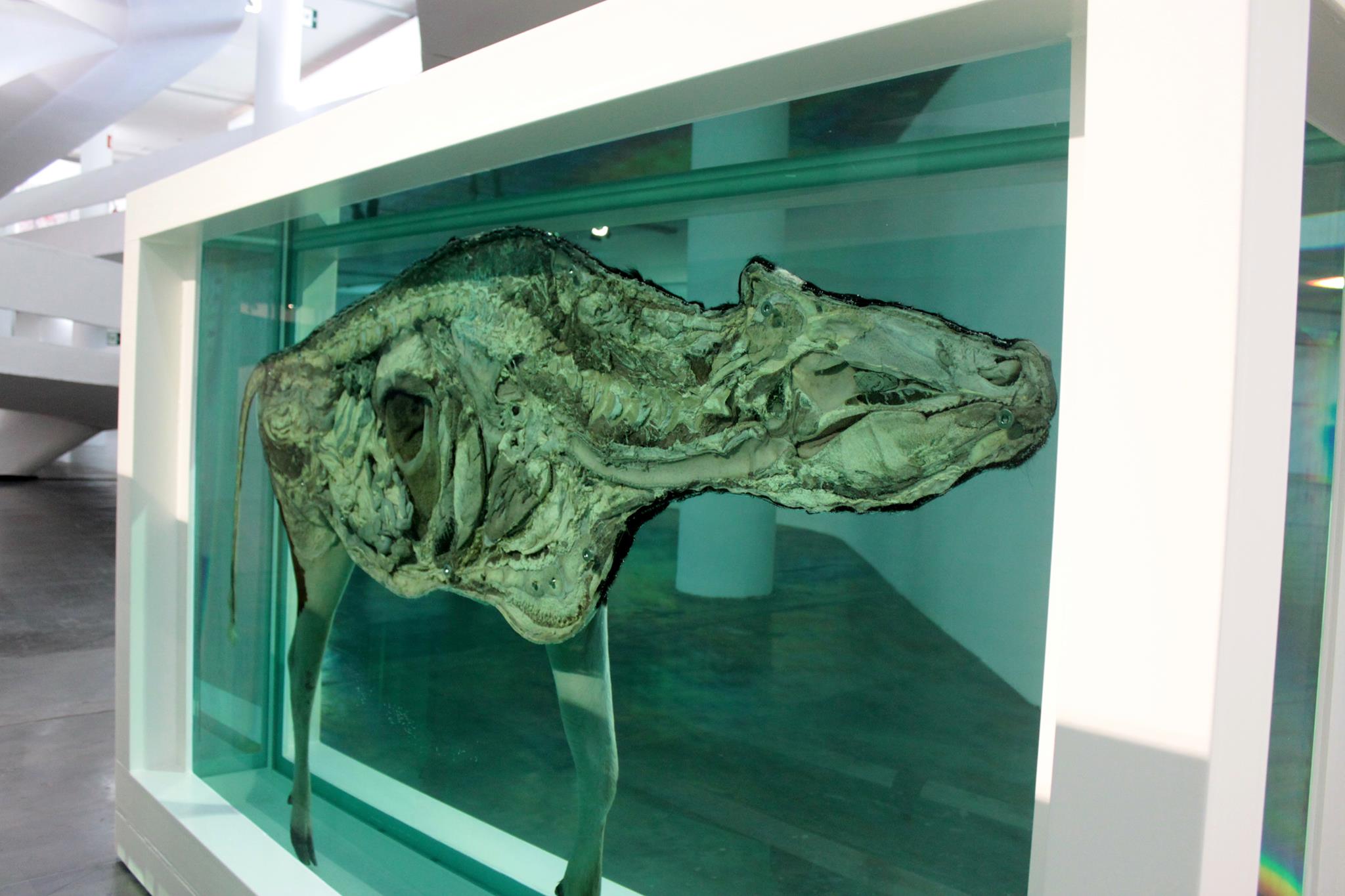 Damien Hurst’s Cow Cut in Half
Damien Hurst’s Cow Cut in Half  Figure 1 Michael Mann’s hockey-stick graph
Figure 1 Michael Mann’s hockey-stick graph
